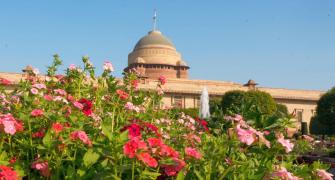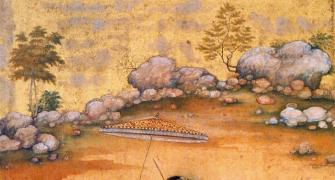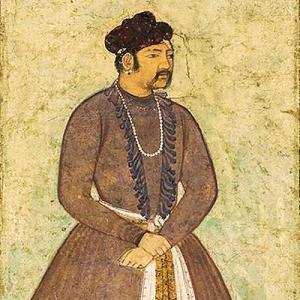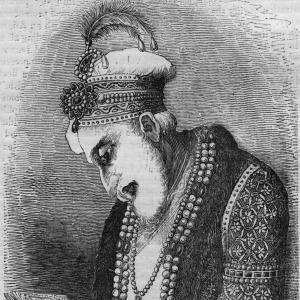'William Mustoe, the director of horticulture during British rule, named the Presidential Palace garden after the Mughals.'
'He simply kept the name because it was made on the pattern of a Mughal garden.'
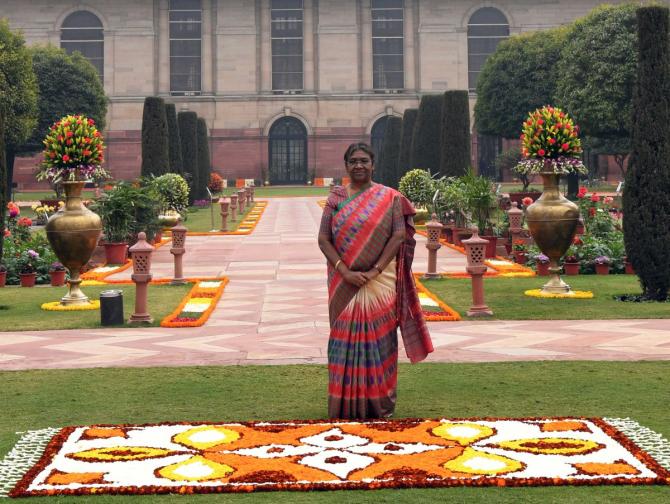
The iconic Mughal Gardens at Rashtrapati Bhavan opened for the public on January 31.
But visitors will notice that the name of the garden has been changed to Amrit Udyan.
'This new name not only shreds yet another symbol of a colonial relic but also reflects India's aspirations for the Amrit Kaal,' tweeted Union Minister Dharmendra Pradhan soon after the renaming.
Critics of Prime Minister N D Modi point out that this was one more step by his government to re-write history, as the ruling Bharatiya Janata Party has been renaming city after city in every state they are in power.
So what is the history behind the Mughal Gardens and what does it stand for?
Syed Firdaus Ashraf/Rediff.com spoke to G S Khwaja, former director of the Archeological Survey of India who has written books on the architecture style of Mughal India, including The Mughal Gardens.
How did the name Mughal Gardens come about? What does it have to do with the Mughals?
Because it was the Mughals who brought the Chahar Bagh pattern of gardens from Iran to India.
It was in their period that this pattern was popularised.
Mughal emperor Jehangir's father-in-law, Itimad-ud-Daulah, who happened to be empress Noor Jahan's father, was a good architect and he popularised this style of gardens in India.
Was it not Babur who brought the Mughal style garden concept to India?
Babur built a garden in Agra called the Aram Bagh (now called Ram Bagh).
After his death he was buried there, but later on his body was moved to Kabul and was buried at Bagh-e-Babur.
Yes, so the Mughal garden concept starts from Babur's period.
He came from the Fergana valley in (present day) Uzbekistan and missed those gardens in India.
So, he started building those kind of gardens in India.
He also got a variety of fruits and plants from Uzbekistan and planted them in India.
In his autobiography Tuzk-e-Babri (Baburnama), he writes clearly how a garden must be built and how a city should be built.
What was the concept of gardens in India before the Mughals?
We had vatikas, but I don't know the details of those gardens or the pattern of those gardens of ancient India as that is not my area of study.
What is this Chahar Bagh concept of garden?
It is a pattern of garden in which two water canals bisect each other. They then divide the garden into four quarters.
That is why it is called as Chahar Bagh or Char Bagh because there are four gardens in one garden.
And at the centre of the garden a tomb or palace is located.

How and when did Mughals start getting influenced by the Iranian style of architecture and gardens?
After the second Mughal emperor Humayun lost the battle to Sher Shah Suri, he moved to Iran and took refuge under the then shah of Iran.
And with the help of the Safavid dynasty of Iran he helped to re-establish himself in India.
When he came back to India, many Iranians, poets, calligraphers and painters came to India.
And as I told you earlier, it was Mughal emperor Jehangir's father-in-law Itimad-ud-Daulah, an architect by profession, who brought many masons and architects with him to India.
If you notice Islamic architecture in India, you will find that the delicacy (and beauty) came in those structures due to Iranian influence.
In the times of the Sultanate era (1206-1526), the Islamic structures they built were very robust.
The dome used to be half-circle and used to be heavy built.
Iranians brought beauty to Islamic structures in India.

So which was the first garden in India based on the Chahar Bagh design?
Humayun's queen Haji Begum built a tomb for Humayun on the pattern of Chahar-Bagh of Iran.
The Mughal engineers were impressed by the layout of Sultan Muhammad Khudabanda Uljaytu's tomb at Sultaniya in Iran. He ruled from Tabriz in Iran (1304 to 1316).
When the Mughals started building their buildings, they started getting civil engineers, architects, mimars (masons), calligraphers and painters from Iran who started building these gardens in India.
How many gardens did the Mughals build in India?
There are many, but then we will have to count the total gardens of undivided India and that will include the gardens of Bangladesh and Pakistan too.
I think they must have built around 30 gardens across these three countries at different places.
In present-day India, they are in Haryana, Punjab, Uttar Pradesh, Maharashtra and Delhi.
In Burhanpur, Madhya Pradesh, they constructed Mahal Gulara. Burhanpur was called Darur-Suroor (a place for enjoyment).
They constructed Mughal style gardens here (Burhanpur) too because it was near the Tapti river. The Mughals used to spend the summers in this place.

Is it true that the Mughals brought the concept of rectangular pearl gardens, long butterfly gardens, circular gardens and terraced gardens?
These things were added later to promote tourism, but the Mughals did not bring the concept which you mentioned.
They got different kinds of flowers for sure, like tulips to plant a whole garden in Srinagar.
It is a very popular tourist destination in Srinagar. This was brought from Iran and planted here. In Mandu too, Mughals planted many good gardens.

The name Mughal gardens in Rashtrapati Bhavan was changed to Amrit Udyan. What was the Mughal role in this garden?
In 1917, the new city of Delhi was formed by the British on the grounds of the old, Tughlaq-ruled city.
They did that after Delhi became the capital of British India, replacing Calcutta, in 1911.
The Mughals had nothing to do with Mughal gardens at the President's Palace, but it was architect Edward Lutyens who had a role.
William Mustoe was the director of horticulture at that time and he laid out this Presidential Palace garden plan by keeping in mind the gardens of Kashmir like Shalimar and Nishat gardens.
Since these Kashmir gardens were built by the Mughals, William Mustoe named the Presidential Palace garden after the Mughals.
He simply kept the name Mughal Gardens because it was made on the pattern of a Mughal garden.

Is it true that the fountain concept for gardens was introduced by Mughals in India?
Yes. Wherever there is a water source, it has to be lifted using force, and this engineering marvel was introduced by Abdul Rahim Khan-i-Khanan in India.
During emperor Jehangir's time he introduced this style of gardening on the banks of the Tapti river at Burhanpur.
After him, Mughals introduced the concept that a fountain will be at the centre of the garden.

